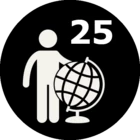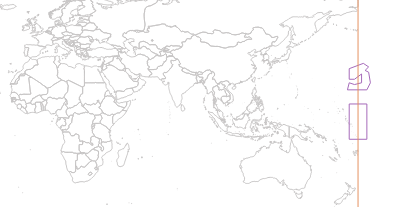Hello everyone,
I want to draw a polygon that crosses the 180th meridian and obtain this geometry (created manually, splitting the feature into two separate polygons):

Instead I obtain this:

I don't understand why the geometry won't generate properly. FME creates the polygon with the greatest distance between points instead of the shortest.
I have to do this for many polygons and also lines, with much more complex boundaries, so I can't do this manually like this one.
Any idea on how I can achieve this?
Here is the workspace I used to generate these geometries:
Thank you very much






 I then created this workspace, using
I then created this workspace, using 